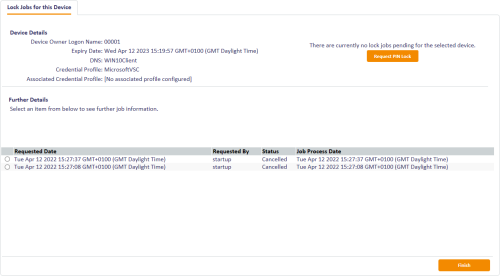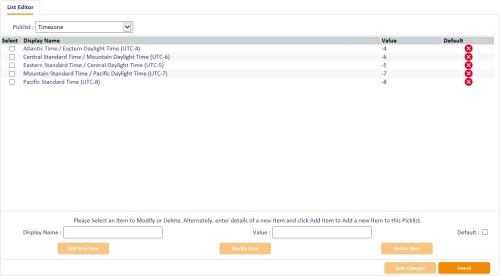5.12 Managing VSC access
You can use the Manage VSC Access workflow to schedule a VSC to be locked; for example, if a user is going on leave.
Lock jobs are processed on the user's PC by the Self-Service App Automation Mode. See the Self-Service App features section in the Self-Service App guide for details.
5.12.1 Requesting VSC locks
To request a lock:
-
From the Cards category, select Manage VSC Access.
You can also launch this workflow from the View Device screen in the MyID Operator Client; this launches the workflow with the VSC already selected. See the Requesting, updating, and canceling VSC locks section in the MyID Operator Client guide for details.
-
Use the Find Person screen to locate the user.
Alternatively, click Device Search to search for the VSC by name.
Note: The Device Search option appears only if you have the Allow device management from the MyID user interface option (on the Devices tab of the Operation Settings workflow) set. See section 6.2, Setting the MyID configuration options for VSC issuance for details.
-
If the user has more than one VSC, select the device you want to use.
The screen lists the history of lock requests.
A Status of Awaiting Issue means that the job is active; a Status of Canceled means that the job is not active.
You can have only one lock job active at once. If you already have a lock job, you can update or cancel it; see section 5.12.2, Updating and canceling VSC locks.
- To request a lock, click Request PIN Lock.
-
Specify when you want the lock to be processed.
Select one of the following:
- Next Self Service App Run – the lock is processed the next time the Self‑Service App runs.
- Specific Date and Time – select the Timezone, Date, and Time you want the lock to be processed. The next time the Self‑Service App runs after this time, the VSC will be locked.
You can configure the list of timezones. See section 5.12.3, Setting up timezones for details.
- Type a reason for the lock request.
- Click Request PIN Lock.
5.12.2 Updating and canceling VSC locks
To update or cancel a lock:
-
From the Cards category, select Manage VSC Access.
You can also launch this workflow from the View Device screen in the MyID Operator Client; this launches the workflow with the VSC already selected. See the Requesting, updating, and canceling VSC locks section in the MyID Operator Client guide for details.
- Use the Find Person screen to locate the user.
-
If the user has more than one VSC, select the device you want to use.
If you have a current lock job, you can cancel or update it; if you do not have a current lock job, you can request a new one; see section 5.12.1, Requesting VSC locks.
-
Select one of the following:
- Cancel PIN Lock – the lock request is canceled.
- Update PIN Lock – you can select a different date and time for the lock job to be processed.
- Click Finish.
Note: The Job Management workflow does not list the jobs created by this workflow. You must use the Manage VSC Access workflow for all actions related to these jobs.
5.12.3 Setting up timezones
You can use the MyID List Editor workflow to set up the timezones that you use in the Manage VSC Access workflow.
To edit the list of timezones:
- From the Configuration category, select List Editor.
-
From the Picklist drop-down list, select Timezone.
The Display Name is listed in the Manage VSC Access workflow. The Value is the time difference in hours between the timezone and UTC.
-
To add a new timezone, type a Display Name and Value, then click Add New Item.
To edit a timezone, select the entry, update the Display Name and Value, then click Modify Item.
To delete a timezone, select the entry, then click Delete Item.
Note: You cannot use the same Value for multiple items. If you want to use different names for the same timezone (for example, Mountain Standard Time and Pacific Daylight Time), as a workaround you can add .0 to the value; for example, -7 and -7.0 are treated as different items, but refer to the same number of hours for the offset from UTC.
- Click Save Changes.


